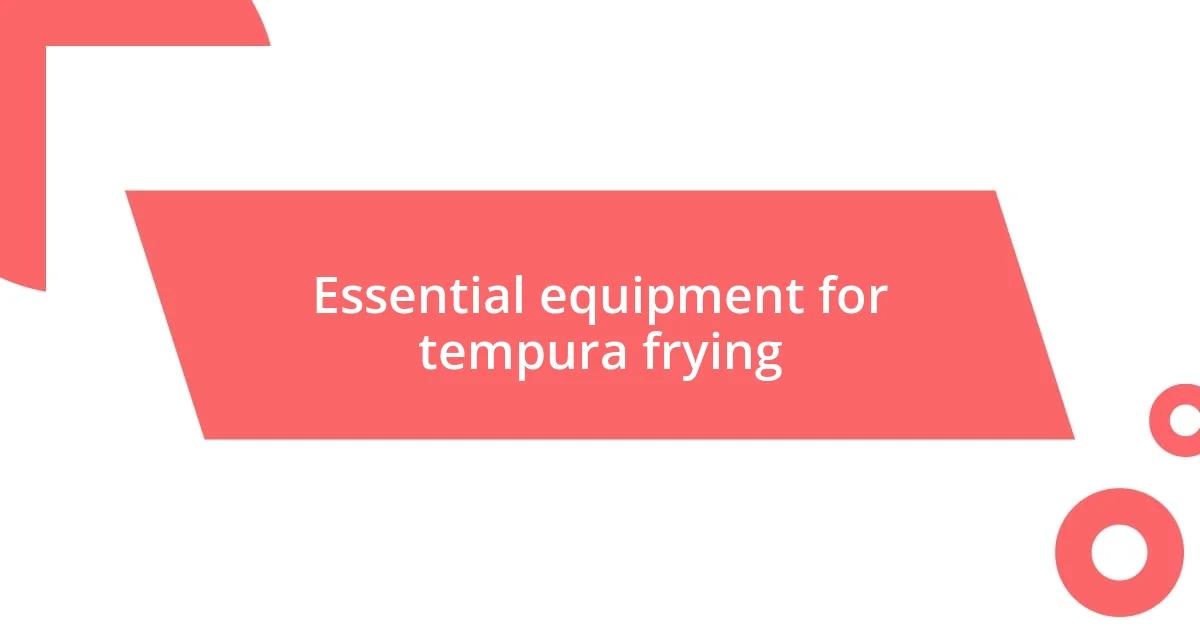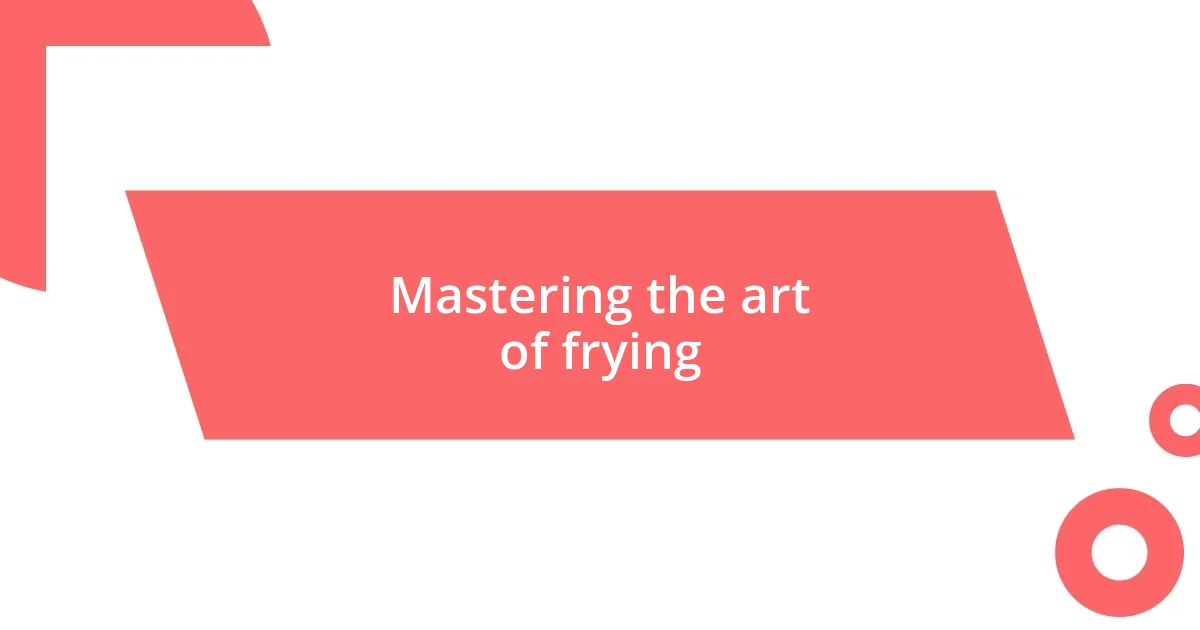Key takeaways:
- Achieving the perfect tempura batter requires ice-cold water and minimal mixing to maintain a lumpy consistency, similar to thick pancake batter.
- Essential equipment for tempura frying includes a deep pot or wok, thermometer, slotted spoon, mixing bowl, and cooling rack for optimal results.
- Precise temperature control is crucial for frying; techniques like using an infrared thermometer and the “double fry” method help achieve the desired crispiness.

Understanding tempura batter consistency
Getting the consistency of tempura batter just right is crucial for achieving that light, crispy texture we all love. I remember my first attempt; I was so eager to impress friends that I whisked the batter too much, which resulted in a dense coating that clung to everything like glue. Have you ever felt that disappointment when a dish doesn’t turn out as expected? It’s all about striking that perfect balance between moisture and airy lightness.
When preparing tempura batter, the key lies in using ice-cold water and minimal mixing. I always keep a bowl of ice nearby—this little trick ensures the batter stays chilly, which helps create those delightful bubbles when fried. Isn’t it fascinating how something as simple as temperature can transform a dish? The batter should be lumpy; if it’s too smooth, it can become heavy. Just thinking about those crispy tempura pieces brings a smile to my face.
I’ve found that the right consistency resembles that of a thick pancake batter. You want it to coat your ingredients lightly without being too runny. Occasionally, I like to dip a piece of sweet potato or zucchini in and see if it holds on without dripping off. Have you tried that little test? It’s not just about texture but about the joy of discovering the perfect coating together with your favorite vegetables or seafood.

Essential equipment for tempura frying
When it comes to tempura frying, having the right equipment makes all the difference. I remember my first fry fest—an old, wobbly pot was my frying vessel. Let me tell you, it was an adventure trying to maintain the right temperature with that thing! A more stable and appropriate pot can help you avoid those flare-ups and achieve consistent results.
Here’s a checklist of essential equipment for tempura frying:
-
Deep Pot or Wok: A sturdy pot or a wok is essential for deep frying. It should be wide to allow for sufficient oil.
-
Thermometer: Monitoring the oil temperature is crucial. A digital thermometer helps keep it at that perfect 350°F.
-
Slotted Spoon or Spider Strainer: These tools help lift your tempura out of the oil without excess grease.
-
Mixing Bowl: A large bowl for your batter preparation is a must, especially one that fits over ice if you want to keep things chilly.
-
Cooling Rack: After frying, place your golden tempura pieces on a cooling rack to maintain their crispiness, preventing them from steaming in their own heat.
Starting off with these tools made my journey so much smoother. Each piece of equipment plays its role in the delicate dance of tempura. What tools do you find indispensable in your kitchen adventures?

Mastering the art of frying
Mastering frying techniques is an art form that requires patience and practice. I still recall my second attempt at frying tempura; I was overconfident and didn’t test the oil temperature. What a disaster that was! The batter absorbed too much oil, and the result was a soggy mess instead of the crisp, golden bites I envisioned. It taught me that precise temperature control is paramount for achieving that signature crunch.
One key element in perfecting the frying process is managing your oil’s temperature. I’ve found that an infrared thermometer has become my best friend in the kitchen. Once, during a lively dinner party, I used it to keep the oil right at 350°F while my friends eagerly awaited the tempura. Waiting for that sizzle as I dropped the first pieces was electrifying! The perfect frying temperature allows those lovely bubbles to form and ensures each bite is light and airy. Have you felt that thrill when the food meets the oil?
Another crucial aspect is the method of frying itself. I often experiment with the “double fry” technique, where I fry the tempura at a lower temperature first and then crank it up for the final crisping. It’s mesmerizing to watch that transformation happen. How rewarding is it to bite into a piece you just perfected, knowing you’ve taken the time to refine your technique? That’s the essence of mastering frying—experimenting, learning, and ultimately savoring your success.














